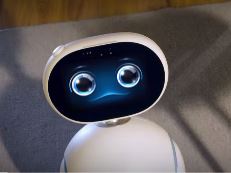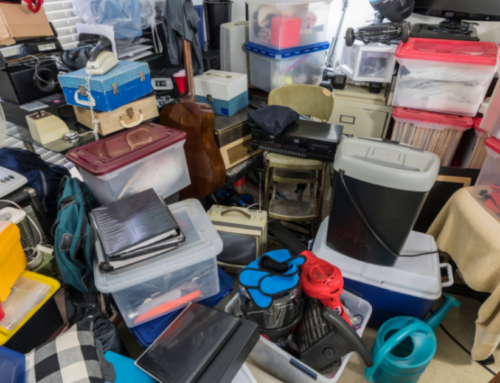In my May blog, “Boomers Alone,” I ruminated on the current baby boom generation who are “far less connected socially than earlier generations” and as such “may be looking at many years of increasing isolation.” Add to this dismal outlook our longer life spans and the ever increasing need for caregivers to care for our expanding elderly population, and a cup half-empty picture may emerge. Yet, as a baby boomer myself, I’m optimistic about the future because I trust that, just as has happened in previous generations, humankind will continue to develop innovative ways to solve our problems.
One of those innovations, in development in various forms around the world, is the use of robot caregivers. Zenbo, from computer manufacturer Asus, is a walking, talking, sweet-faced robot with a planned roll-out later this year. In an interview by IDG News Service and reported on in PCWorld, Jonney Shih, chairman of Asus, explained that Zenbo was designed to be useful for all family members. “It will read stories and play games with kids; for the elderly it can call family members for help or assistance; and for all members of the family, it can play music, present recipes, answer questions, and controls the home’s lights and TV.” Zenbo is able to do all this because it moves independently and responds to verbal commands. I watched the 7-minute video of Zenbo on the Asus website. It is certainly cute, but without arms, I don’t see it taking the place of a caregiver helping a client with activities of daily living anytime soon. But Zenbo is just the beginning.
The Future of Robot Caregivers
In a New York Times opinion piece The Future of Robot Caregivers, Louise Aronson, Associate Professor of Geriatrics at UC San Francisco, reflected on one of her elderly patients who lived at home with only sporadic help and contact with others. “What she needs is someone who is always there, who can help with everyday tasks, who will listen and smile.” This description could actually describe other types of assistive robots in development today.
“Imagine this, ” writes Dr. Aronson. “Since the robot caregiver wouldn’t require sleep, it would always be alert and available in case of crisis. While my patient slept, the robot could do laundry and other household tasks. When she woke, the robot could greet her with a kind, humanlike voice, help her get out of bed safely and make sure she was clean after she used the toilet. It — she? he? — would ensure that my patient took the right medications in the right doses. At breakfast, the robot could chat with her about the weather or news.
And then, because my patient loves to read but her eyesight is failing, the caregiver robot would offer to read to her. Or maybe it would provide her with a large-print electronic display of a book, the lighting just right for her weakened eyes. After a while, the robot would say, “I wonder whether we should take a break from reading now and get you dressed. Your daughter’s coming to visit today.”
It was great when society was such that elders went to live in the homes of their extended family and lived out their lives surrounded by and cared for by loved ones. But in the absence of that, Dr. Aronson says, “a reliable robot may be better than an unreliable or abusive person, or no one at all.”
Last February, the website Gizmag wrote about Robear, a friendly bear-like robot, in development by the Japanese research institute Riken. What makes Robear different than Zenbo, is its design which enables it to lift and move a person from/to a bed or wheelchair, turn someone who is bed-ridden, as well as help a person stand up. Now in its third iteration, Robear’s movements are gentle and smooth, and with Japan’s huge and growing elderly population, has been met with enthusiasm.
Nothing stands still, particularly technology in the 21st century. Zenbo and Robear are only 2 of dozens of “robot caregivers” in development around the world. So while we continue to scour our communities for wonderful (human) caregivers to care for our clients, we watch with curiosity and amazement at what is coming out of the many technology research and development labs. No one anticipates or wants a future where robot caregivers replace humans. Caring for each other in times of need is part of the compact between generations, and is an essential part of what makes us human. But if these intelligent assistive technologies can provide, at a reasonable cost, a caregiver robot that can provide even a little assistance to seniors wanting to remain safe and independent, wouldn’t that be a good thing?
Image credit: Zenbo ASUS YouTube video – screenshot






